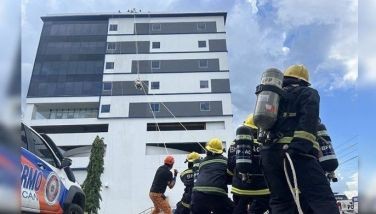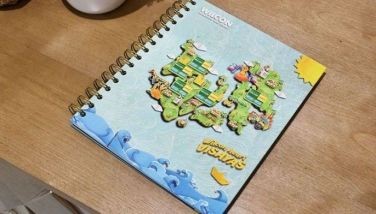Passi's Pintados festival
CEBU, Philippines - Panay, being dubbed as the cradle of civilization, has a very rich cultural heritage. Its name was given when Miguel Lopez de Legaspi explored the island for food and he exclaimed, “Pan, hay en esta isla”, meaning, there is bread on the island.
Tattooing was practiced among the natives of Panay. According to chronicler Miguel de Loarca, men tattooed their entire body with beautiful figures using small pieces of iron dipped in ink. These were worn to exhibit their record in battle. The more tattoos a man on his body, the higher his status as a warrior. Women however, as a rule, display tattoos only on one side of their arm.
According to one account, a group of Spaniards who had settled in Calinog, a place near Passi, went downstream on the Jalaur River and anchored in Ansig. They saw tattooed women who were winnowing pounded palay. One of the Spaniards asked the woman the name of the place. The woman who did not understand the Spaniards thought she was asked what she was doing. Thus she replied, "naga-pangpasi", which means picking out unhusked rice from pounded palay. From then on the Spaniards called the place "Pasi" which later evolved to "Passi".
As Christianization took place, the friars forced the natives to abandon the "pintados" culture. However, tattooing did not escape the eyes of the historians who recorded the practice with respect and veneration that this form of art deserves. To many, it was a practice that ought not only to be preserved but also to be revived in some ways to highlight the fact that during the pre-Spanish era, an advanced civilization of artistic people had already flourished in this part of the archipelago.
It is in this context that Passi City, one of the earliest Malay settlements in Panay, embarks on a milestone, the Pintados de Passi Street Dance Festival, to showcase and revive one of Panay's rich cultural legacies from its ancestors.
The City of Passi, Iloilo celebrated its fourteenth Foundation Anniversary last March 14 to 18 with the theme "Kulturang Passinhon: Balikdon kag Palanggaon". This was highlighted with the Pintados de Passi street dance festival tribe competition on the last day of celebration.
Eight competing tribes formed by a cluster of school and community-based dance enthusiasts vied for the win - Tribus Buay-Buay, Halawud, Pasi, Inyawan, Pula-Pula, Hamungaya, Pulakan and Linaw. The latter won first place.
What makes this festival most exciting is the visual presentation of its cultural concept. Performers, mostly comprised of teenagers, especially the males, theatrically tattooed their bodies with henna. Elaborate and symbolical artistic designs spread along their integumentary system including the buttocks. The laborious task would take at least three days preparation to tattoo the entire competing tribe. With skimpy g-strings exposing the male behinds, the beauty of human skin adorned with black paint amazed the excited crowd.
The general color palette was an earthy tone matched with bright red or yellow to symbolize flame and fiery strength as warriors exposed their sharp spears signifying war ritual or the commencement of the celebration. The war dance is essential to the presentation. The basic "Passinhon" steps follow thereafter.
Drumbeat and musicality are remarkable brought about with the use of indigenous wood musical instruments.
As laborious as the intricate body tattoo was also the manner of presentation for the stationary and street dance rituals. There were three judging sites for the stationary presentation - at the City's covered gymnasium, in front of Gaisano Capital store and in front of PNB Passi. The contingents brought along their large backdrops and other resources to stage their performance. Street dancing stations were located in between the stationary venues. Spectators from all walks of life did not spend for tickets to watch their performance. They would just gather in a suitable place along the streets and watched everything.
As rich as the colourful display of fierce bravado was the equation of the number of judges drawn together from all corners of the country to decide on the winning contingent. The pack was lead by Cultural Center of the Philippines authority Josefina Guillen, National Commission for Culture and the Arts' Rodel Fronda and Bayanihan costume designer Anabelle Judith Ramos-Lopez, Dr. Erly Martir (Guimaras), Dr. Jenelyn Fundal. Dr. Honorio Magat, Jr. (Lucban, Quezon), Ronnie Retiracion, Owen Milambiling, Dr. Ligaya Lotella, Dr. Razel Matilde Dalida, Dyna Rameneses, Luchelyn Beltran, Dennis Mallado, Analyn Bacongallo (Antique), Ryan Catig (Capiz) and this writer.
Special thanks to Hon. Mayor Jesry T. Palmares, Mr. Rey Deatras, President, Passinhon 2000 Incorporated, Dr. Regil Palmares, Chairman, Tribe Competition Committee, Romulo Bugna, Artistic director, Tourism Officer Mae Buenaflor and the smiling, ever hospitable people of the City of Passi.
Sulong Passinhon! (FREEMAN)
- Latest
- Trending
























